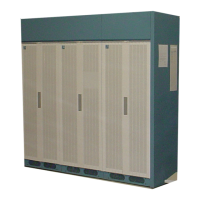5. The bearer terminal process selects an OFI and a port for the
call. The corresponding IP address and port number are
forwarded to the SIP terminal process.
6. The SIP terminal process creates an INVITE message. This
message is in a compact, internal SIP format. During the
construction of the INVITE message, the SIP terminal process
checks to see if SFID 769 (SIP without Encapsulated ISUP) is
on. If the SFID is on, the ISUP Encapsulation flag is checked (in
this example ISUP Encapsulation is set to
no). Finally, the
Address Complete Message (ACM) timer is started. An INVITE
message requests that the TPS allocate resources for the call.
This message includes:
• IP address and port number for the OPS OFI-IP
• Encapsulated ISUP IAM message
• A description of the requested session.
The message is forwarded to the SIP PH in the SIP GSM. At this
point the ISUP MIME is included. Additionally, an INVITE
transaction timer is started.
7. The SIP PH expands the INVITE message to standard, external
SIP format, adds the appropriate SCTP and IP headers. Prior to
sending the INVITE message, a check is performed to determine
whether ISUP is allowed. If not, as in this example, the ISUP
MIME is discarded and the message is forwarded to the TPS via
the IP signaling network.
8. The OPS waits for the TPS to respond.
SIP without Encapsulated ISUP - Detailed
Call Scenario
Call Flow
....................................................................................................................................................................................................................................
3-52
Lucent Technologies 235-200-118
Issue 3.02B, March 2007

